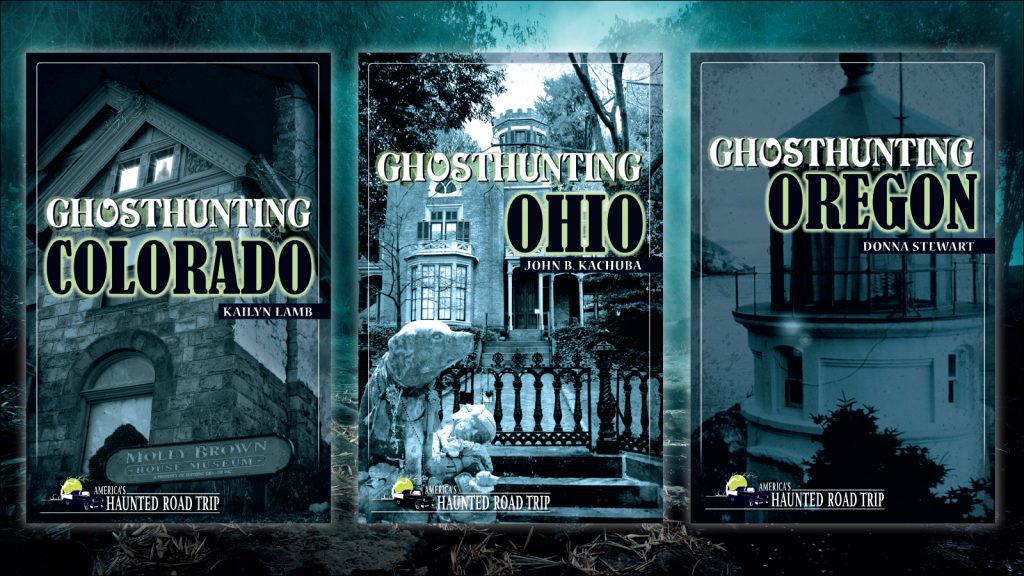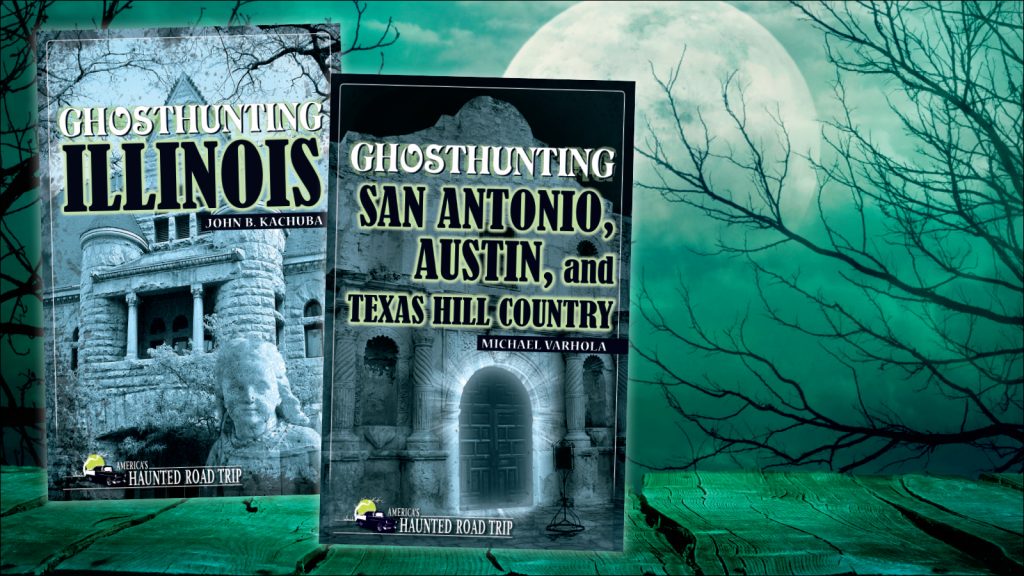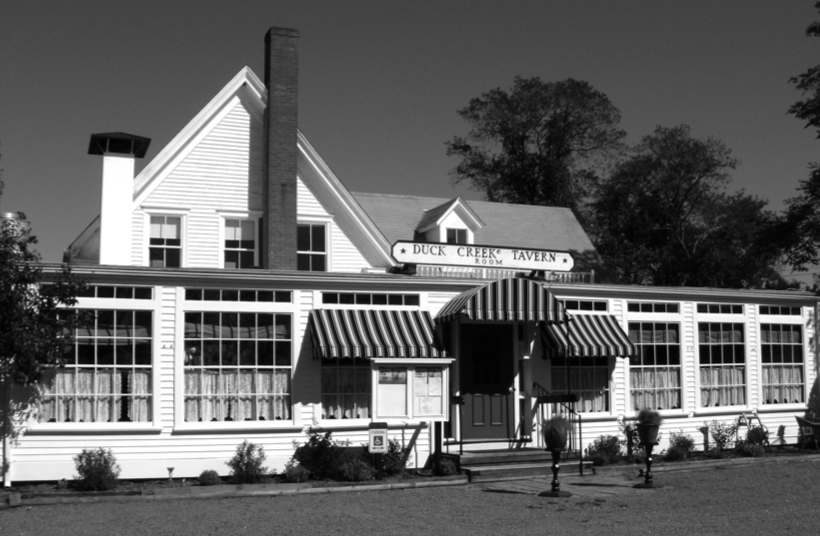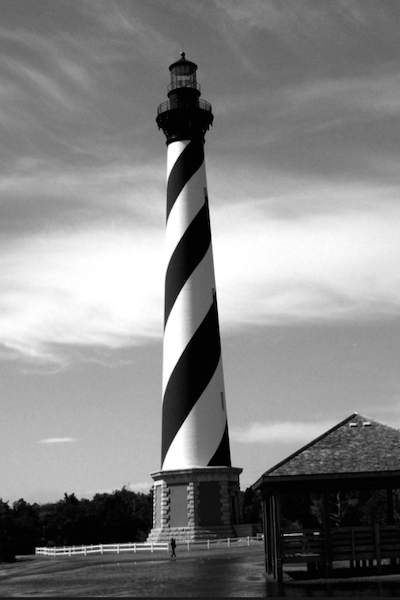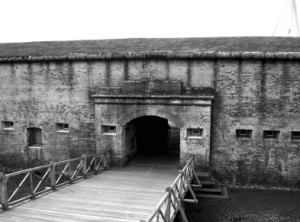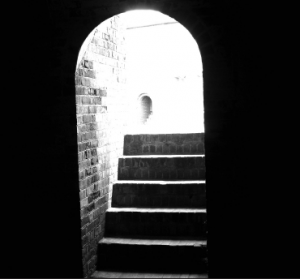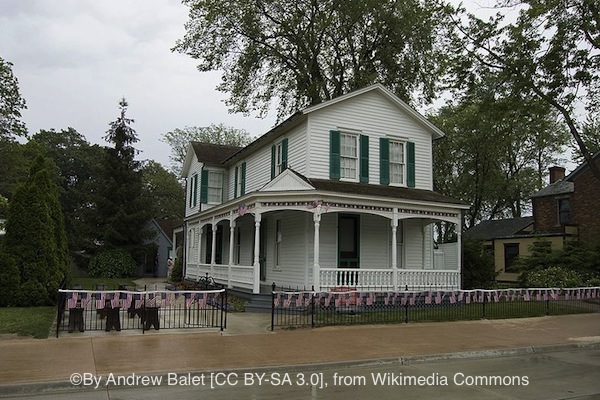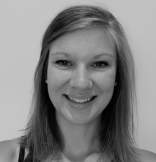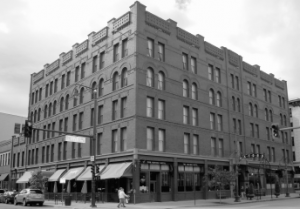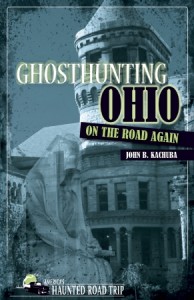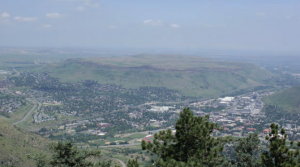AMERICA’S HAUNTED ROAD TRIP is a unique series of travel guides. Each book profiles 30-100 haunted places that are open to the public. From inns and museums to cemeteries and theaters, the authors visit each place, interviewing people who live and work there. The books also include travel instructions, maps, and an appendix of more places the reader can visit. Here are short introductions to three stories from our ghosthunting authors.
Mary Ann Winkowski is one of the inspirations behind the hit show Ghost Whisperer. Over the course of her work as a paranormal investigator, Mary Ann’s reputation has spread. She was a consultant to the CBS hit television show, has appeared on numerous TV and radio news programs, and has spoken at countless lectures. Check out the Pumpkin Cookies recipe from her cookbook! Mary Ann, the original ghost whisperer, offers more than 100 recipes in her book Beyond Delicious: The Ghost Whisperer’s Cookbook: More than 100 recipes from the Dearly Departed.

Kala Ambrose, author of Spirits of New Orleans: Voodoo Curses, Vampire Legends and Cities of the Dead, takes us back to her roots with her story about The Court of Two Sisters. The name Court of Two Sisters originates from two Creole sisters, Emma and Bertha Camors. The two sisters (born in 1858 and 1860) spent their entire lives together. According to history and local lore, they died within months of each other and were buried side by side in 1944 at St. Louis Cemetery #3 in New Orleans. The ghosts of both sisters are often seen throughout the restaurant, both inside the building and strolling around the courtyard. Check out the charming story here.

Spooky Devil’s Backbone Tavern is only one of Michael O. Varhola’s scary stories from his book Ghosthunting San Antonio, Austin, and Texas Hill Country. The Devil’s Backbone Tavern, a watering hole, is located on the site of an old Native American campground and what was once a stagecoach stop. The tavern staff, in fact, readily acknowledge that it is haunted and are generally happy to talk about its resident spirits. There is no guarantee that you will experience any of these things if you visit the Devil’s Backbone Tavern, but there is a chance that you will—and, at the least, you can enjoy a cold one and chat about the ghosts whom many believe to be present here. The tavern even has a website dedicated to its haunted history. For now, check out Michael’s story here.

MORE GHOSTLY TALES AND SUPERNATURAL ENCOUNTERS
Does telling creepy tales around the campfire sound like a perfect night? Is scaring yourself silly your idea of a good time? Are you brave enough to find out about monsters, ghosts, and other supernatural encounters? If you’re a fan of ghosthunting stories, are you ready to find out more and track some spirits on your own? We have what you need to get started! Check out our many titles that will give you goose bumps.
Jessica Freeburg and Natalie Fowler, authors of Monsters of the Midwest: True Tales of Bigfoot, Werewolves, and Other Legendary Creatures, are active paranormal investigators. In this book, they share stories about a mysterious snake growing to frightening proportions; a slimy, clawed, green-scaled beast that terrorizes swimmers from the bottom of a lake; and two enormous birds preying upon farm animals—and children. These are only three stories of unimaginable encounters with legendary creatures in the states of Illinois, Indiana, Iowa, Kentucky, Michigan, Minnesota, Missouri, Nebraska, North Dakota, Ohio, South Dakota, and Wisconsin. Get your copy now!
The award-winning author of Ghostly Tales of Michigan, Ryan Jacobson has always held a fascination for all things spooky. He features one place so haunted that it’s been featured on national television. His collection of ghost stories presents the creepiest, most surprising tales of the Great Lakes State.

In Ghostly Tales of Wisconsin, Ryan shares 28 chilling ghost stories about reportedly true encounters with the supernatural in the Badger State.
In Ghostly Tales of Minnesota by Ruth D. Hein, a jealous spirit pushes people down the stairs, and the ghost of a murder victim attacks a woman in her sleep. There are a total of 33 chilling ghost stories in this book. Get it now!
With Ruth’s book Ghostly Tales of Iowa, horror fans and history buffs will delight in 24 stories, including those about a mysterious ghost communicating by knocking, the spirit of a witch trying to lure children into the basement of an abandoned home, and a love triangle ending with three tragic deaths—and one tormented ghost.

Jeff Duke has 14 chilling stories for you in his book Ghostly Tales of Mississippi. Among other stories, he reports about a graveyard where the dead do anything but rest peacefully and an ancient witch that roams the dark woods of the Magnolia State.
TALES ABOUT GHOSTS AND MONSTERS — COMING SOON
Be on the lookout for two more terrifying collections from Jessica Freeburg and Natalie Fowler, which will be released on September 10th. The professional writers spent countless hours combing the regions for the strangest and scariest run-ins with the unexplained. Readers who share their fascination with things that go bump in the night will love these books.
Readers will delight in the 27 terrifying stories found in Ghostly Tales of Pennsylvania. Did you know that Pennsylvania is among the most haunted states in America? The chapters in this book are based on reportedly true accounts, proving that Pennsylvania is the setting for some of the most compelling ghostly tales ever told. The short stories are ideal for quick reading and will captivate anyone who enjoys a good scare. Share them aloud with friends, or try them alone at home—if you dare. Pre-order your copy now!

In Monsters of the Northeast: True Tales of Bigfoot, Vampires, and Other Legendary Creatures, vampires prey upon family members from beyond the grave. A monstrous dog with glowing eyes seems to vanish into thin air. A giant, red-eyed beast terrorizes homeowners while helping itself to beloved pets—for dinner. The Northeast’s history includes several unimaginable encounters with legendary creatures. This collection of “ghost stories” presents the creepiest, most surprising tales of monsters in the states of Connecticut, Delaware, Maine, Maryland, Massachusetts, New Hampshire, New Jersey, New York, Pennsylvania, Rhode Island, and Vermont. Pre-order your copy now!
With Halloween approaching, it’s time to stock up on tales of ghosts and monsters. We hope you like our suggestions for hair-raising reading. You can find all of our ghostly tales here.
If you are into spiders, check out Dr. Sebastian Evecherri’s quick guide to the Spiders of the United States.
#bewellbeoutdoors #halloween #ghosthunting #ghost #paranormal #monsters


